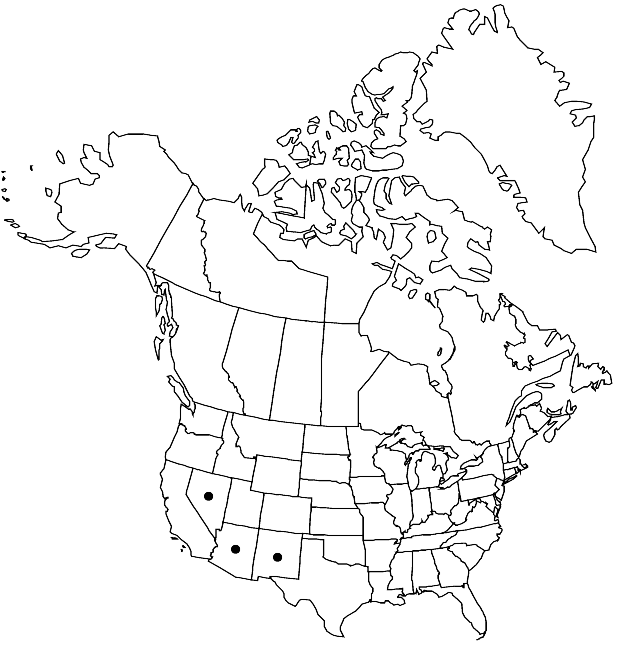Descurainia obtusa
in H. G. A. Engler, Pflanzenr. 86[IV,105]: 321. 1924.
Biennials; glandular or eglandular; finely pubescent, often canescent, trichomes dendritic, sometimes mixed with simple ones. Stems erect, unbranched basally or branched proximally and/or distally, 4–12(–15) dm. Basal leaves: petiole 0.5–3.7 cm; blade pinnate, oblanceolate to obovate or ovate in outline, 1–6 cm, lateral lobes (2–5 pairs), oblanceolate to linear or narrowly lanceolate, (7–25 × 2–10 mm), margins usually entire or serrate, rarely incised, (apex obtuse). Cauline leaves sessile or shortly petiolate; blade smaller distally, distal lobes often narrower, surfaces densely pubescent. Racemes considerably elongated in fruit. Fruiting pedicels ascending to divaricate, straight, 6–15 mm. Flowers: sepals spreading or sometimes ascending, greenish to yellowish, oblong, 1–2 mm, densely pubescent, (trichomes dendritic, sometimes mixed with glandular papillae); petals oblanceolate, 1–2 × 0.5–0.7 mm (equaling or shorter than sepals); median filaments 1.4–2 mm; anthers 0.2–0.3 mm. Fruits divaricate to suberect, linear, slightly torulose, 10–20(–23) × 0.7–1 mm, (acute at both ends); valves each with distinct midvein, (sparsely to densely pubescent); septum not veined; ovules 16–40 per ovary; style 0.1–0.2 mm, glabrous. Seeds uniseriate or biseriate, light brown, oblong, 0.7–1.1 × 0.5–0.6 mm. 2n = 14.
Phenology: Flowering May–Sep(-Oct).
Habitat: Gravelly grounds, sandy areas, disturbed sites, open forests, plateaus, abandoned mine areas, dry streams and washes
Elevation: 1500-2600 m
Distribution

Ariz., Nev., N.Mex., Mexico (Baja California).
Discussion
As circumscribed here, Descurainia obtusa is a relatively uniform, diploid species. It probably was involved as a parent of D. adenophora, which is a hexaploid readily distinguished by characters discussed thereunder.
Selected References
None.